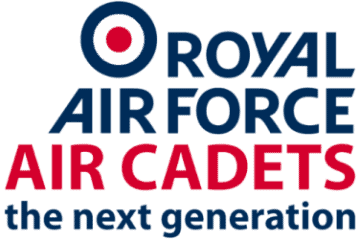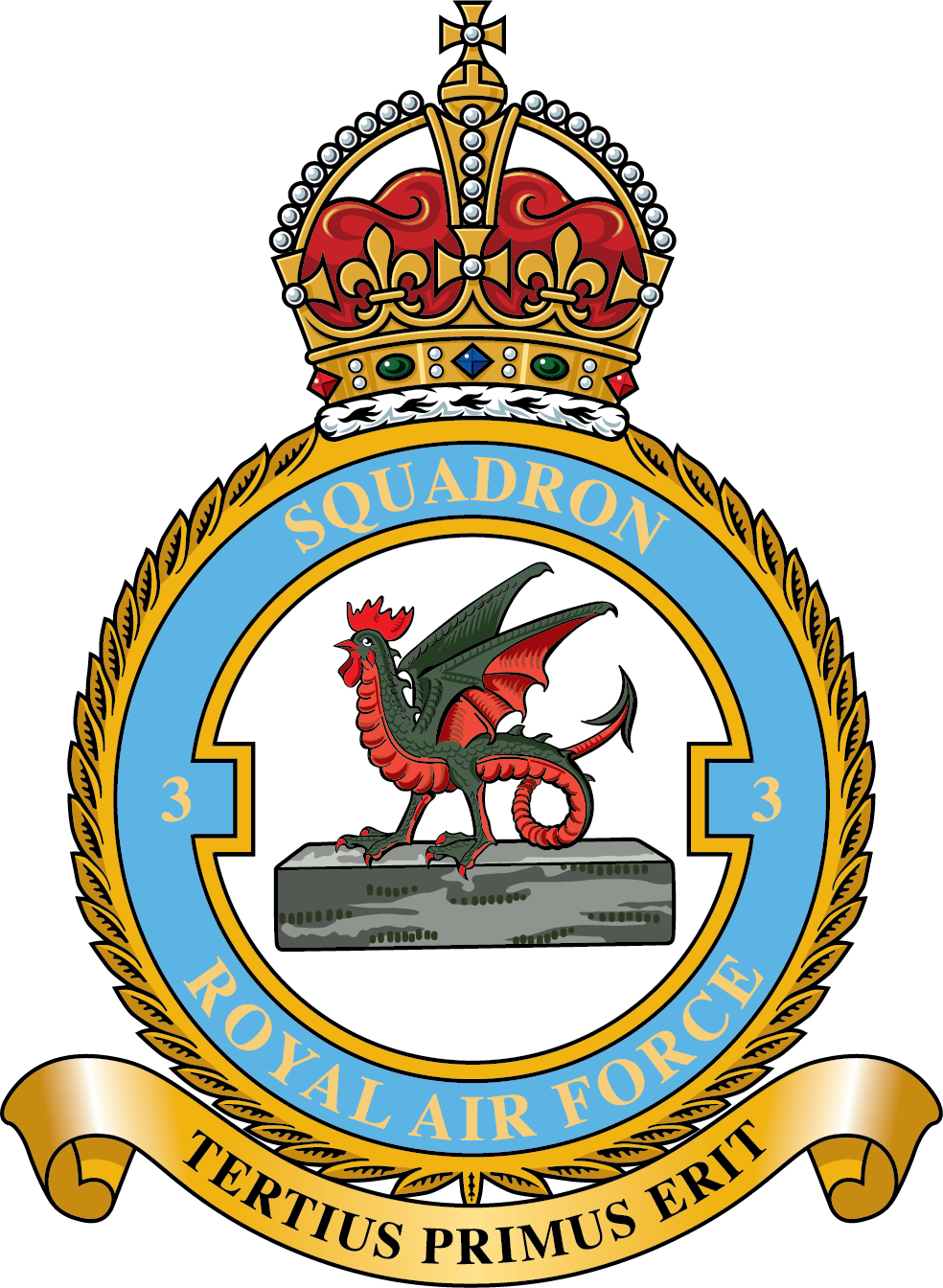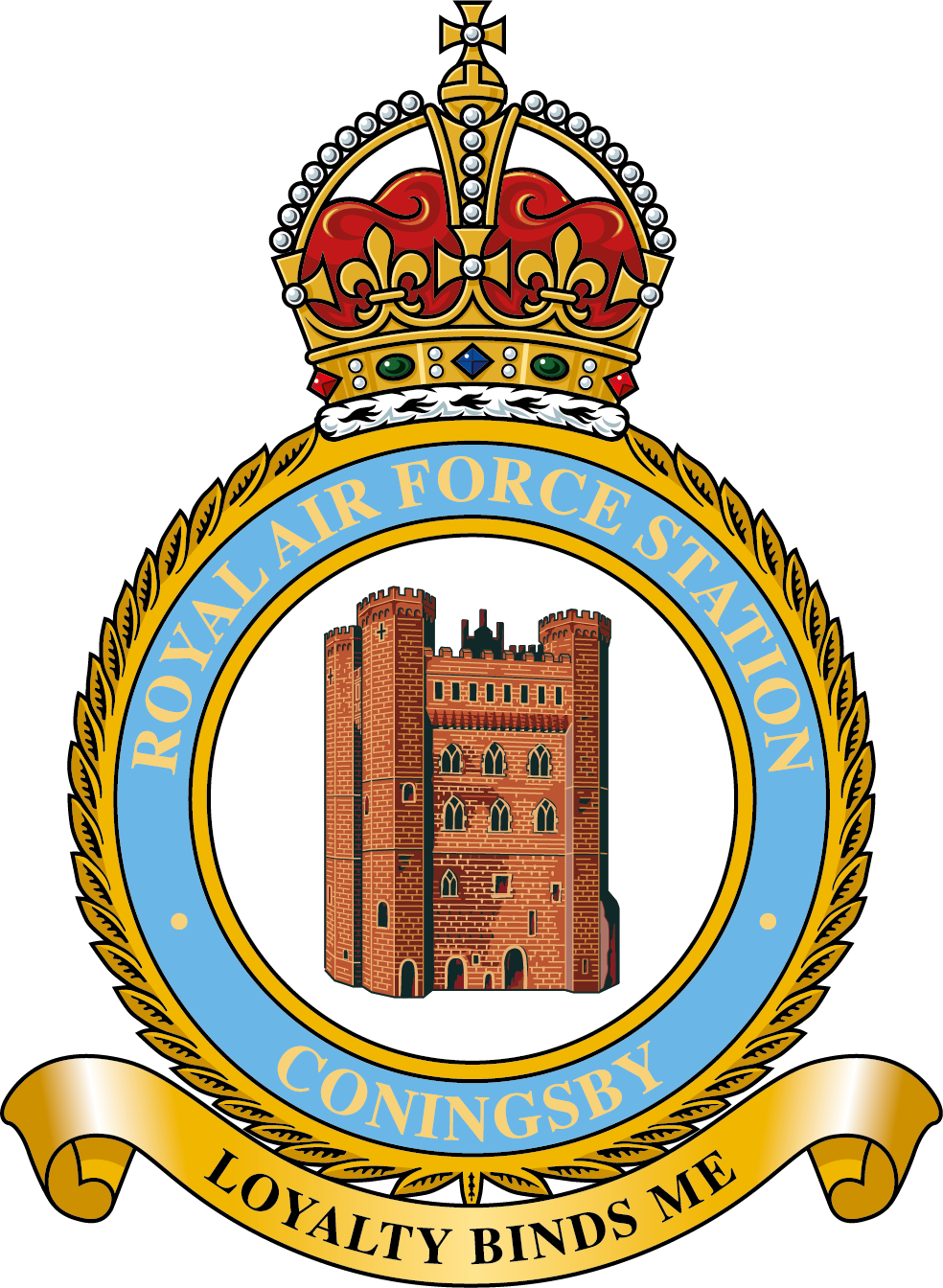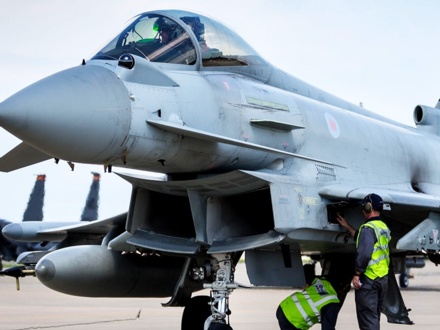THE SQUADRON
3 (F) Squadron is based at RAF Coningsby and is one of two Quick Reaction Alert (QRA) stations in the UK.
It's the first British, Empire or Commonwealth independent military unit to operate heavier-than-air flying machines.
Former aircraft flown by the Squadron include the Hurricane I, Javelin FAW4 and Harrier GR1 and GR5. 3 (F) Squadron provided air defence for the London 2012 Olympics - the first time RAF fighters have been stationed in London since World War Two.
